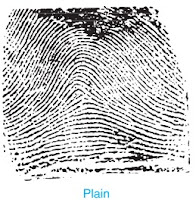Polyamides- Definition, Types, Properties and Applications
What are Polyamides?
Polymers that have amide linkages are called polyamides. These are prepared by condensation polymerization of dibasic acids with diamines or their equivalents.
Polyamides occur both naturally and artificially like proteins, such as wool and silk are naturally occurring polyamides whereas nylons, aramids and sodium poly(aspartate) is artificially manufactured polyamides.
Following are some famous polyamides:
1. Nylon 6,6
Nylon 6,6 is a type of polyamide that is made of two monomers that is hexamethylenediamine and adipic acid each containing 6 carbon atoms. That's why it is called nylon 6,6.
Nylon 6,6 has high mechanical strength, rigidity, and stability under heat and chemical attack. That's why it is used for making machine parts, airbags, ropes, conveyor belts, etc.
Preparation of Nylon 6,6
It is prepared by the condensation polymerization of adipic acid and hexamethylenediamine. The acid and the amine first react to form a salt which when heated to 525 K under pressure, undergoes polymerization with the elimination of water as steam and the nylon is produced in the molten state.
Properties of Nylon 6, 6
1. It has a high melting point and high heat deflection temperature.
2. It offers better resistance to acids and has high stain cleanability.
3. It is more difficult to color due to dense structure with small and evenly spaced pores.
4. It exhibits greater mold shrinkage, lower expansion, and improved thermal and electrical conductivity.
Applications of Nylon 6,6
1. It is used for making swimwear, hoses, and machine parts due to its waterproof property.
2. It is also used for making glass-reinforced laminates, fasteners, and conveyor belts.
3. It is used in fibers for textiles, carpets, and molded parts.
4. It is also used for making surgical sutures and strings for musical instruments.
2. Nylon 6 or Perlon
Nylon 6 or Perlon is a polymer that was developed by Paul Schlack to reproduce the properties of Nylon 6,6. It is prepared by ring-opening polymerization of monomer caprolactam.
Nylon 6 is tough, elastic, and lustrous possessing high tensile strength. That's why it is used for the manufacture of type cords, fabrics, and mountaineering ropes.
Preparation of Nylon 6
The monomer caprolactam on heating with water at high-temperature polymerization gives nylon 6. When caprolactam is heated with a trace of water, it hydrolyses to E-aminocaproic acid (6-aminohexanoic acid) which upon continued heating undergoes polymerization to give nylon-6.
Properties of Nylon 6
1. It has a lower melting point and lower heat deflection temperature.
2. It has a lustrous surface finish which makes it easy to color.
3. It has poor chemical resistance to acids and has a high water absorption rate.
4. It has low mold shrinkage and low stain cleanability.
Applications of Nylon 6
1. It is widely used for gears, fitting, and bearings in the automotive industry.
2. It is used as a thread in bristles of toothbrushes and strings for acoustic and classical musical instruments.
3. It is also used for manufacturing threads, ropes, filaments, and nets.
4. It is also used for the manufacturing of gun frames.
3. Kevlar
Kevlar is heat resistant and strong synthetic fiber which is an aromatic polyamide, also known as aramids.
It is a polymer of 1,4-benzene-dicarboxylic acid and 1,4-diaminobenzene which have hydrogen-bonded chains, giving it a sheet-like structure.
Preparation of Kevlar
Kevlar is prepared in a solution from monomers 1,4-benzene-dicarboxylic acid and 1,4-diaminobenzene in a condensation reaction yielding HCl as a by-product.
Properties of Kevlar
1. Kevlar is five times stronger than steel on an equal weight basis.
2. It has high heat stability and flexibility.
3. It has very high rigidity due to delocalized bonding which causes benzene rings to be inflexible.
4. There is a high electron chain density in Kevlar.
Applications of Kevlar
1. Army helmets are made of Kevlar. It is also used for lightweight bulletproof vests and high-performance skis.
2. It is used in the protective clothing worn by firefighters because it is stable at a very high temperature.
3. It is used as a protective outer shield for optical fiber cable.
4. It is widely used in the manufacturing of motorcycle helmets, car parks, brakes, clutch lining, etc.








